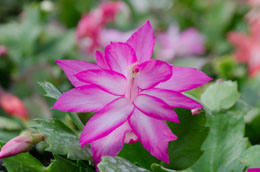Bringing a slice of nature inside your home is never a bad idea. Especially flowers, as they add to the aesthetic values. Buzzle aims at helping you choose such plants.

Before you choose the varieties of plants that suit your home. It is essential to conduct a thorough research and garner information on how to look after of the type that interests you. The following are some tips that might aid you.
Watering and Soil Condition
Growing flowering plants indoors is basically related to container gardening. Most need less amount of sunlight. You need to maintain proper watering and soil care to help your indoor flowering house plants survive.
Like with every plant, soil is the growing medium that helps provide anchorage, water, and minerals. The soil mix should be well-drained, aerated and be able to hold nutrients and water. The pH range should be around 5.0-6.5 and should be able to provide ample oxygen to the roots. Many such as bromeliads, orchids, and African violets need a special mix of soil to grow well. You can make one with the following ingredients:
- 1 part garden loam or potting soil
- 1 part sand or vermiculite or perlite
- 1 part peat moss
To this mixture you need to add 20% superphosphate and ¾ ounce of dolomite limestone to 4 gallons of potting mix. Add balanced fertilizer to the mix for nutrition.
Growing plants in peat-based soils lose their vibrancy and rate of growth after one or two growing season. This is because these soils are not suitable for long-term use as they decompose within a year.
As a solution, you need to provide the plants with good aeration. This is because as the soil decomposes it packs itself around the roots, especially the small, young roots. This causes lack of air and leads to oxygen starvation. So keep digging regularly for a good aeration zone.
As the soil decomposes, it breaks down into small particles. This causes drainage problems in the pot and small pebbles at the bottom do not allow the water to drain through. Also, the plants get very little room to grow. So, you need to make sure there is proper drainage and growth area available to them.
Poor drainage also causes slat build-up in the pot. This causes the young, tender roots suffer from stress leading to their death. Therefore, you should change the soil every year. You should re-pot every year to have a healthy and productive plant.
It is recommended to mix perlite in your peat-based mixes as it helps in aeration. You should flush the soil with water every month to get rid of excess salts. All you need to do, is take your pot to the sink and let water from the tap flush through the soil. You can insert a wick at the bottom hole of the pot to let excess water drain through and help in reduction of root rot.
Do not water too less or too much as both can prove fateful. You need to consider the plant type and the amount of water it needs to grow.
Some of the Best Varieties
- African violets
- Poinsettias
- Orchids
- Peace lilies
- Amaryllis
- Christmas cactus
- Anthurium
- Kalanchoe
- Desert cacti
- Bromeliads
- Begonia
- Chrysanthemums
- Cyclamen
- Lilium
Plants that need low amount of sunlight
- Spathiphyllum Species
- Peace lily
- African violet
- Bromeliads
- Christmas Cactus
- Zebra plant
Plants that need medium amount of sunlight
- Begonia
- Moon valley pilea
- Moth orchid
Plants that need maximum amount of sunlight
- Aloe vera
- Coleus
- Meyer's lemon
- Polka-dot plant
You will come across a variety of species, colors, fragrance, etc., of flowers and plants that will help create the magic of a garden inside your house. Visit your local nursery and bring home some sweet-smelling and beautiful varieties.






 Before you choose the varieties of plants that suit your home. It is essential to conduct a thorough research and garner information on how to look after of the type that interests you. The following are some tips that might aid you.
Before you choose the varieties of plants that suit your home. It is essential to conduct a thorough research and garner information on how to look after of the type that interests you. The following are some tips that might aid you.